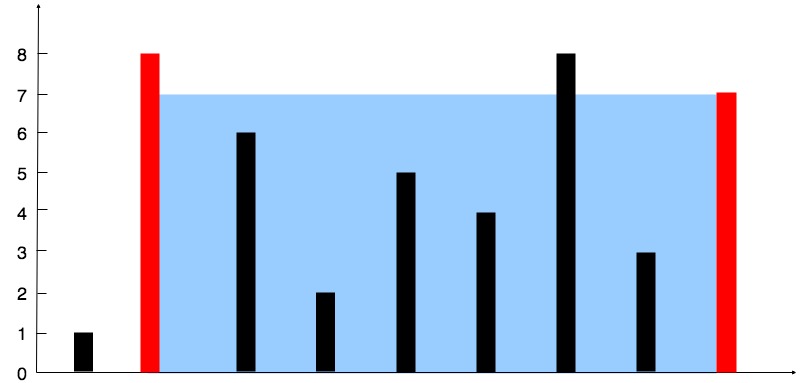動機
一開始以為要用stack,因為中間不用的柱子可以忽略掉,但是這樣沒辦法保留距離短但比較遠的柱子。
Problem
Given n non-negative integers a1, a2, ..., an , where each represents a point at coordinate (i, ai). n vertical lines are drawn such that the two endpoints of the line i is at (i, ai) and (i, 0). Find two lines, which, together with the x-axis forms a container, such that the container contains the most water.
Notice that you may not slant the container.
Example 1:

Input: height = [1,8,6,2,5,4,8,3,7]Output: 49Explanation: The above vertical lines are represented by array [1,8,6,2,5,4,8,3,7]. In this case, the max area of water (blue section) the container can contain is 49.
Example 2:
Input: height = [1,1]Output: 1
Example 3:
Input: height = [4,3,2,1,4]Output: 16
Example 4:
Input: height = [1,2,1]Output: 2
Constraints:
n == height.length2 <= n <= 1050 <= height[i] <= 104
Sol
之後看著圖,想到範圍就想到,從最外層往裡面縮,看起來可以用two ptr
但用two ptr之前要先能確定,怎麼變大與縮小,而我們有柱子的長度!! 把低的丟掉就好了
class Solution:
def maxArea(self, hs: List[int]) -> int:
a, b, ret = 0, len(hs)-1, 0
while a < b:
water = (b-a) * min(hs[a],hs[b])
ret = max(ret, water)
if hs[a] >= hs[b]:
b -= 1
else:
a += 1
return ret